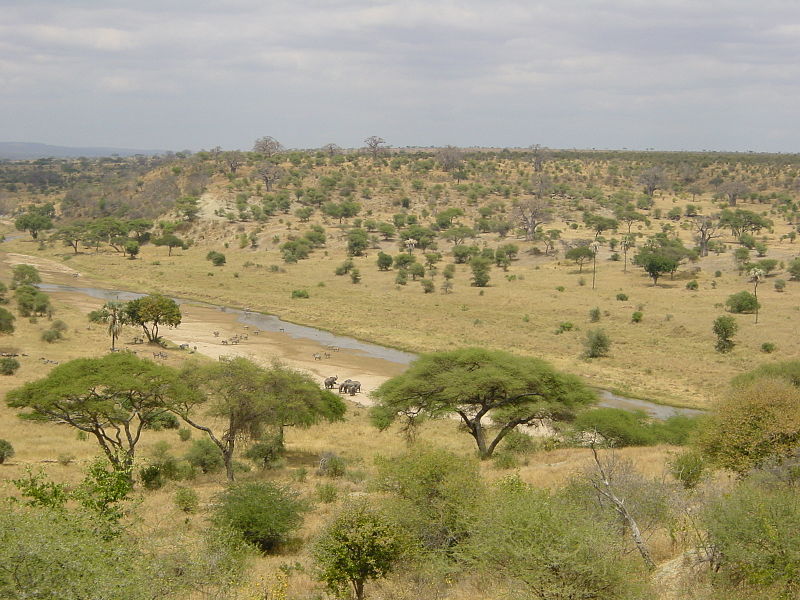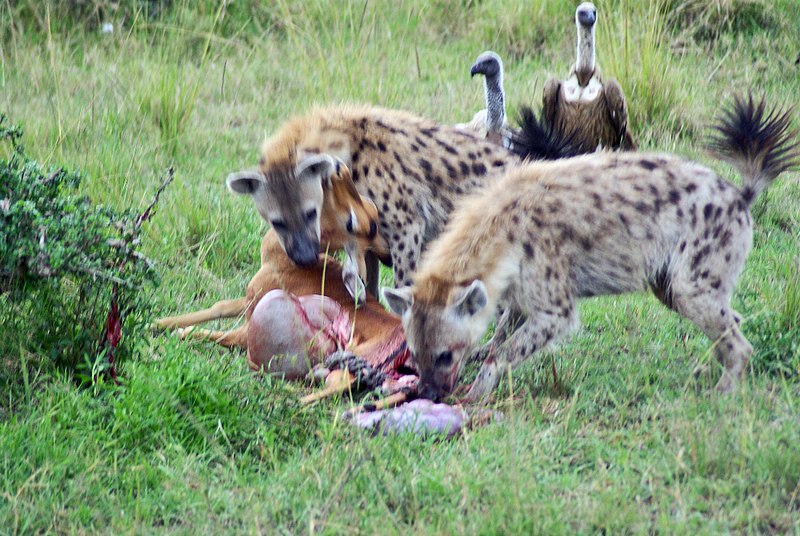Food web in the savanna
The savanna is one of the most fascinating biomes on Earth, with endless grasslands, scattered trees, and a vibrant mix of wildlife. Stretching across regions like the African Serengeti, South America’s Llanos, and Australia’s tropical grasslands, it supports a diverse savanna food web that is both beautiful and complex.
From the tallest giraffes nibbling on producers in the savanna to the fiercest carnivores in the savanna hunting for prey, and even the tiniest fungi recycling nutrients, every living organism plays a vital role in maintaining the savanna ecosystem food web.
In this post, we’ll explore:
- The structure of the food web in the savanna
- The roles of producers in the savanna, primary consumers in the savanna, secondary consumers in the savanna, and savanna decomposers
- Examples from the African savanna food web
- The connection between the savanna food chain and the tropical savanna food web
- Why are decomposers essential to life in this biome
Savanna Region

1. What is the Savanna?
A savanna is a tropical or subtropical grassland with scattered trees, seasonal rainfall, and a warm climate year-round. It’s an environment that supports herbivores, predators, scavengers, and decomposers in the savanna working together in a delicate balance.
Key Features of the Savanna:
- Climate: Warm all year, with a wet and dry season.
- Vegetation: Dominated by grasses with some trees like Acacia and Jackalberry.
- Wildlife: Includes both consumers in the savanna (herbivores and carnivores) and a variety of decomposer savanna species.
The African savanna food chain is the most famous example, but similar savanna food webs exist worldwide.
2. Understanding the Food Web of the Savanna
A food web of the savanna describes how energy flows between different organisms. While a food chain in a savanna shows one direct path (e.g., grass → zebra → lion), a savanna biome food web is more complex, with multiple connections.
Categories in the Savanna Food Web:
- Producers in the Savanna – Plants that make their own food.
- Primary Consumers in the Savanna – Herbivores that eat plants.
- Secondary Consumers in the Savanna – Carnivores that eat herbivores.
- Omnivore in the Savanna – Organisms that eat both plants and animals.
- Savanna Decomposers – Break down dead matter and recycle nutrients.
- Scavengers – Feed on animal remains.
3. Producers in the Savanna – The Foundation of Life
Savanna producers are plants that capture solar energy and convert it into food through photosynthesis. They are the base of both the savanna food chain and the tropical savanna food web.
Common producers include:
- Grasses (Elephant grass, red oat grass, Bermuda grass)
- Trees (Acacia, Jackalberry, Baobab)
- Shrubs and Wildflowers during the wet season
Without these producers in the savanna, there would be no energy for consumers in the savanna.
4. Primary Consumers in the Savanna – Plant Eaters
Primary consumers in the savanna are herbivores that feed directly on plants. They form the second step in the food chain savanna.
Examples:
- Zebras – Grazers that feed mainly on grasses.
- Impalas – Both grazers and browsers.
- Warthogs – Eat grasses, roots, and berries.
- Cows – Domesticated herbivores in human-managed areas.
These savanna consumers convert plant energy into a form usable by carnivores.
5. Secondary Consumers in the Savanna – Predators
Secondary consumers in the savanna are carnivores in the savanna that hunt and eat herbivores.
Examples:
- Lions – Apex predators in the African savanna food chain.
- Leopards – Stealthy hunters feeding on small to medium prey.
These savanna secondary consumers keep herbivore numbers in balance, preventing overgrazing.
6. Omnivores in the Savanna
Some animals, known as omnivores in the savanna, eat both plants and animals.
Examples:
- Humans – Farm crops and hunt animals.
- Aardvarks – Mostly eat ants and termites, but may consume plant matter.
Omnivores link multiple parts of the food web African savanna.
7. Scavengers – Nature’s Cleanup Crew
Scavengers feed on dead animals, preventing the spread of disease and recycling nutrients.
Examples:
- Hyenas – Both hunters and scavengers in the savannah food web.
- Vultures – Specialise in carrion.
8. Savanna Decomposers – The Unsung Heroes
The savanna decomposers (or descomponedores de la sabana) include bacteria, fungi, and termites. They break down dead material, enriching the soil for savanna producers.
Examples of what decomposers live in the savanna:
- Termites – Digest tough plant material.
- Bacteria – Decompose organic matter.
- Fungi – Break down dead plants and animals.
Without decomposers in the savanna, the savanna food web with decomposers would collapse.
9. Example of a Food Web in a Savanna
Here’s how energy moves in a savanna food web:
- Grass (producer) → zebra (primary consumer) → lion (secondary consumer) → vultures (scavenger) → fungi (decomposer).
- Acacia leaves (producer) → giraffe (primary consumer) → leopard (secondary consumer) → hyena (scavenger) → bacteria (decomposer).
This shows why a food web for the savanna is more accurate than just a food chain of the savanna — multiple species are connected in complex ways.
10. African Savanna Food Chain vs. Desert Ecosystems
The African savanna food chain is far richer than a desert’s food web because:
- Seasonal rains support lush grasses.
- More plants mean more primary consumers in the savanna, leading to more predators.
By contrast, deserts have:
- Low rainfall (<25 cm/year)
- Xerophyte plants like thorny shrubs and palms
- Reptiles (snakes, lizards, scorpions)
- Oases where crops like dates and figs grow
11. Threats to the Savanna Food Web
The savanna food webs face challenges:
- Climate change alters rainfall patterns.
- Overgrazing reduces plant cover for producers in the savanna.
- Poaching removes predators from the food chain in the savanna.
- Habitat loss due to farming and cities.
When one part of the food web savanna is disrupted, it affects the whole food web of the savanna.
12. Conservation Efforts
Protecting the savanna biome food web requires:
- National parks and reserves
- Anti-poaching laws
- Education on sustainable grazing
- Soil health programs to protect decomposers savanna
13. Final Thoughts – Why the Savanna Food Web Matters
The savanna food web (or food web of the savannah) is more than just lions chasing zebras. It’s a living network where producers in the savanna capture sunlight, primary consumers in the savanna feed on plants, secondary consumers in the savanna hunt herbivores, scavengers clean up remains, and savanna decomposers return nutrients to the soil.
Whether you call it the food web in a savanna, savannah food web, food web savannah, savanna food webs, or food web African savanna, the truth is the same — every species, from termites to elephants, plays a role in keeping this biome alive.
References
- https://www.nationalgeographic.org/media/african-savanna-illustration/
